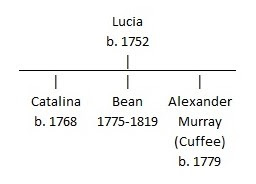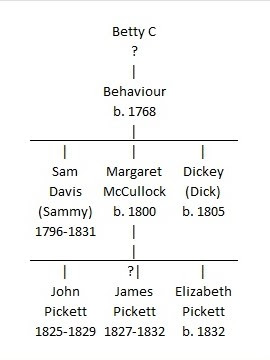Two or three other women called Lucia on Good Hope

The birth of a baby girl called Lucia on the 30th of April 1820 was registered in the 1820 return of 'increases' and 'decreases' for the Good Hope estate. A woman called Lucia (b. 1787) died on the estate on the 27th of May of the same year, and since the baby's mother's name was Lucia, it's possible that baby Lucia's mother died at the age of 33 as a result of complications of childbirth. However, no Lucia born in 1787 was listed in the 1817 slave register. There was a Lucia who was born in Africa in about 1775, who would have been about 45 when little Lucia was born. A Lucia who was born in 1752 is discussed in ' Lucia of Good Hope '. It's possible that there was only one younger woman named Lucia on the estate, and that the trustee or overseer who registered her death in 1820 did not know or did not think it was important to note that she had been born in Africa. Though the disparity in age estimates is larger than usual, this seems more















